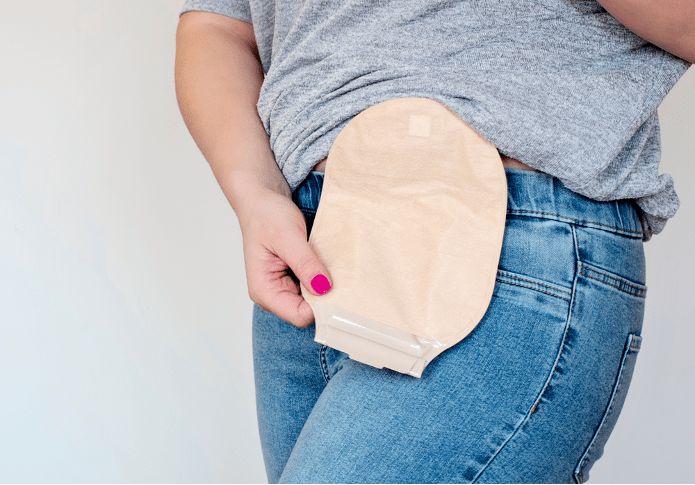Understanding Stoma Care | Guidelines, Types & Home Care Services

Having a stoma can be either permanent or temporary – but it often falls under a chronic condition for many young patients. Before you can effectively manage and resume your daily activities with a stoma, it may be useful to understand what a stoma is, the different types there are, and advice on caring for it.
What is a stoma?
A stoma is an opening formed by surgery. It connects an internal organ to the surface of the body – likely around your abdominal area. Functionally, the stoma is an opening that allows waste to exit your body without going through the digestive system. Often done after bowel surgery, colostomies can be either permanent or temporary. Permanent ones – called end colostomies are when the edges of the colon are stitched to the skin of the abdominal wall to form the stoma.
Stomas may be required if you suffer from bowel cancer or inflammatory bowel diseases such as Crohn’s disease or ulcerative colitis.
Types of stoma
There are different types of stomas for varying causes. Here are the main ones:
- Colostomy: Stools exit the body without passing through the anus.
- Ileostomy: Stools are more fluid, exiting the body without passing through the large bowel.
- Urostomy: An opening for urine to leave the body without passing through the bladder.
How do you take care of a stoma (bag)?
Being concerned about managing your stoma bag is normal. While the adjustment period can be a curve, you will have understood the mechanics and tips in keeping your stoma bag clean with the help of experienced healthcare assistants in Singapore.
Initially, the stoma will be swollen post-surgery. Over the course of a few weeks, the swelling should subside. Using the right-sized stoma bag helps prevent leaks and manage odour. From drainable and closed bags to two-piece systems, learning how to properly use your stoma bag – this involves emptying and cleaning it – goes a long way in reducing the discomfort and disruptions it can potentially cause in everyday activities.
How often you’ll need to empty your stoma bag varies individual to individual and on the type of stoma you have. Over time, you will familiarise yourself with when your stoma bag is active. Patients are also urged to clean their skin surrounding the stoma correctly to avoid soreness, excoriation, or broken skin.
However, if you experience unfamiliar complications, consulting a doctor or your healthcare assistant is recommended. Such symptoms include abdominal cramping, bloating, watery diarrhoea, or a lack of stoma output.
Living well with your stoma bag
It’s only natural that you have a lot of questions before and after your stoma surgery – getting the information you need will help you live well with the right caregiving services. Learning how to adjust to your stoma bag and care for it can improve the quality of life and minimise disruptions. From sports to socialising, there is no reason why you should stop doing things you enjoy.
Compared to most things, a stoma bag will induce fluctuations in your emotional well-being, influenced by the amount of care that goes into managing a stoma and lifestyle changes such as diet. Eating a balanced diet and keeping a food diary can help you track patterns that emerge if you eat certain foods. Connecting with other people who live with stomas can help normalise the situation and ease the transition for you. Ask your healthcare assistant to put you in touch with a support group.
Seek caregiving services from our JagaPros
Do you need additional support in caring for a loved one? Medical or non-medical, the financial and emotional weight of caregiving on a full-time basis can be challenging. With our home care services, you can entrust in our expertise and partner with our nurses to provide your loved one with manageable day-to-day life.
For more information on acquiring support for loved ones, read more here.
Find out more about Jaga-Me and our services here.